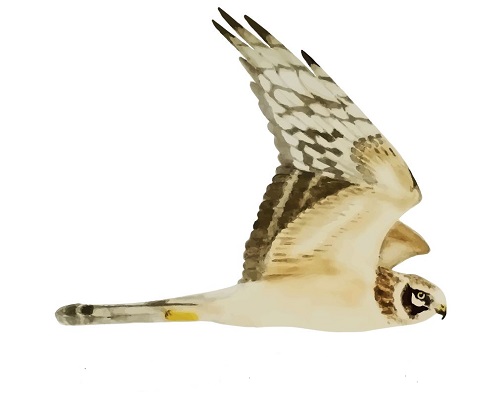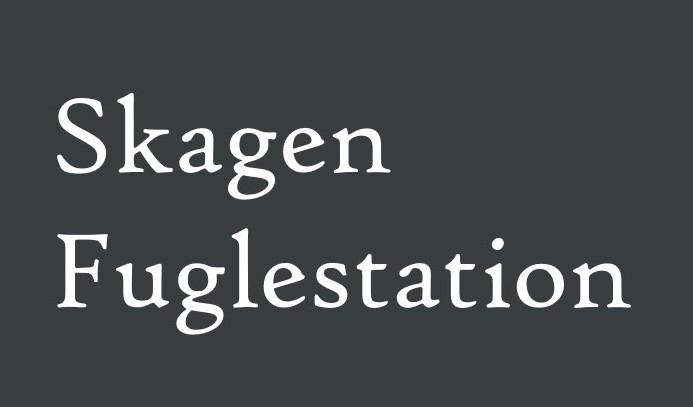Her på Skagen Fuglestations blog bringes korte nyheder i dagbogsformat om hændelser på fuglestationen.
Se indlæg fra måned: feb. (16)mar. (30)apr. (30)maj (31)juni (30)juli (31)aug. (31)sept. (30)okt. (31)nov. (29)dec. (11)
Table Tennis and a Ring Ouzel
The next day with wind, snow and rain should remind us on the day before. After our nice sleep in, we started breakfasting and thinking about possibilities, what we could do today. Luckily, Oluf found some interesting birds on the football field and our guests were so nice to take us there.

Unfortunately, there was no Pied Wagtail (Sortrygged Hvid Vipstjert) anymore among the 31 White Wagtails (Hvid Vipstjert), but a lovely Ring Ouzel (Ringdrossel) and two female type Black Redstarts (Husrødstjert) still got out attention.

Back in the warm station, we startet watching Gladiator and ate some nice chips. Hanelie also worked on her thesis, which seems to turn out really good! After the evening meeting, Simon Sr. joined us for a match of tabletennis. It was really fun and I was back on my high to defeat him.

We ended the day like we startet it - chilling in the living room, chatting about different topics or doing other stuff.
Today’s observations in Dofbasen from observers in the area.
Sum of the raptors in the area based on observations typed into Dofbasen the same day.
People: Hayley Land, Isis Khalil, Hanelie Sidhu, Magnus Houen Lauritsen, Simon Kiesé, Simon S. Christiansen, Dorothe and Kjeld.
The Sun Shines Upon Skagen Another Day
When we woke up this morning the wind and clouds from yesterday had all but dissipated leaving a trail of ice and snow behind. Blue skies and sun teased us with the thought of summer, yet the blankets of white snow reminded us that we were still stuck in the April frost.
View from the Grey Lighthouse this morning.
Hanelie and Hayley were up much before sunrise to set everything up at Kabeltromlen for ringing. They were met by sheets of ice throughout the net lanes and the entire table was covered in ice! Regardless of this, they opened the nets and prepared for another day of ringing. Simon (Snr) joined them for the first round, and the day began. Although the first round was fruitful, the rest of the day was quite slow, and their main highlight was a Redwing (Vindrossel).
Hayley taking notes on an icy table. (Photo by: Simon S. Christiansen)
While this was happening at Kabeltromlen, Magnus and I were making our way up to World’s End 1 for some counting. The first hour was fairly busy, with nearly 1,500 Common Scoters (Sortand), some Guillemots/Razorbills (Lomvie/Alk), some Gannets (Sule), some Northern Fulmars (Mallemuk) and a few Eiders (Ederfugl). We also saw a Merlin (Dværgfalk), which was nice! They are slowly becoming more abundant. After the first hour, unfortunately, migration slowed significantly. We got a lucky visit from Simon (Snr) before he was off to a meeting with the board, and he offered me his gloves which was very helpful to keep my hands warm. Tak!

Simon (Snr) counting at World's End 1.
Dorothe and Kjeld, our guests, had an active day today too. They took advantage of the calm weather and joined us for a bit at Kabeltromlen and at World’s End 1, hopefully they got to see some cool things too.
When we got back from our morning tasks, some of us entered data, some of us went to look for the Hoopoe (Hærfugl), and some of us took a nap. Simon (Jr) did not join us for our morning tasks since he was feeling a bit sick, but he was still hard at work at the apartment gathering rarity reports on White-Tailed Lapwings (Sumpvibe) around Europe. Hopefully he feels better soon!
We also briefly joined the board meeting, introduced ourselves, and brought up some feedback to facilitate our work at the station. Everyone was very kind, and they even left us a generous amount of sandwiches after the meeting! Very much appreciated.
In the evening we discussed our tasks for the rest of the day and tomorrow, and realized we are caught up on almost everything! Simon (Snr) told us that, like yesterday, the weather will be too severe for us to go ringing and observing tomorrow, so we must complete the most important task of all: beating Simon (Snr) in a match of ping pong.
Now Hayley is preparing dinner (which smells amazing) and Magnus has gone to town to see his family.
Ringing (Kabeltromlekrattet)
Wren (Gærdesmutte) 1
European Robin (Rødhals) 4
Dunnock (Jernspurv) 1
Redwing (Vindrossel) 1
Goldcrest (Fuglekonge) 4
Total: 11
Today’s observations in Dofbasen from observers in the area.
Sum of the raptors in the area based on observations typed into Dofbasen the same day.
People: Hayley Land, Isis Khalil, Hanelie Sidhu, Magnus Houen Lauritsen, Simon Kiesé, Simon S. Christiansen, Dorothe and Kjeld, Board Members
A snowy day
This morning we woke to howling winds and our windows covered in snow. Definitely not the spring conditions we have been hoping for!


There was no ringing or counting today so we had a very relaxed time keeping warm and dry inside and completing our indoor tasks. All ringing data sheets were checked and quality assurance of DOFbasen completed.
We then enjoyed watching Indiana Jones with lots popcorn and other snacks. Our guests, Dorthe and Kjeld, made us some delicious pancakes later in the afternoon.
Later on, the tent at Kabeltromlen and the nets in the garden were checked. It was very cold but invigorating to be outside in the snow!

Today’s observations in Dofbasen from observers in the area.
Sum of the raptors in the area based on observations typed into Dofbasen the same day.
People: Hayley Land, Isis Khalil, Hanelie Sidhu, Magnus Houen Lauritsen, Simon Kiesé, Simon S. Christiansen, Dorthe and Kjeld
Topskarv!
Hi everyone,
I arrived a week ago in Skagen and now it is my pleasure to write the blog of today.
I will start with the incidents of last night. In the evening, Simon jr. and I put up the net to catch Short-eared Owls (Mosehornugle). There were two in the area and Simon even spotted one on a three just next to the net! But it was too smart to fly in. We also went out with flashlight and hand net and could observe the owl hunting but there was no chance for us to catch it. But we had another interesting observation: In the light of the lighthouse, we could see birds close to the top of the lighthouse in the fog. Simon and I decided to climb up the lighthouse and took the hand net with us. There were some Robins (Rødhals) and some birds flew very close and a few birds were even so attracted by the light, that they were fluttering at the bright windows on top of the lighthouse. We managed to catch a Robin (Rødhals) and a Goldcrest (Fuglekonge). Hayley joined us on our nightly trip to the top of the lighthouse and back down in the lab, we ringed the birds. It was the first time birds were caught attracted by the light of Det Grå Fyr here in Skagen and an interesting observation to see that.

Ringing (Det Grå Fyr)
Rødhals: 1
Fuglekonge: 1
Total: 2
After Hayley and I went to bed and Simon took care of the owl net, but there was no owl this night.
It was a rather short night, still in the fog, Isis and I went to Kabletromle the next morning, but it cleared up, while we were opening. While opening we heard flight calls of many migrating Redwings (Vindrossel) and it continued the whole morning. They were too high though, to fly in our nets. Hayley came for the first round and we three had a slow day at Kabletrommle. The highlights were two Coal Tits (Sortmejse), which are always getting admired in hand.
Ringing (Kabeltromlekrattet)
Jernspurv: 2
Rødhals: 6
Solsort: 3
Fuglekonge: 7
Gransanger: 1
Sortmejse: 2
Blåmejse: 1
Musvit: 2
Total: 24
Simon jr. joined us for a bit in the ringing but then went to Worlds End one to join Jonas and Magnus. It was the right decision of him because this morning's observation had a record of this spring: 10 Shags (Topskarv) were observed from World´s End one, six of them in one flock. Also, a good number for the Skagen area of 41 Long-tailed Ducks (Havlit) were observed.
Todays observations from obseervers in the area
Our guests Dorthe and Kjeld joined us for a bit at the ringing and then went to the observers to World´s End one. After, they enjoyed being out in the area equipped with the camera.
It turned to be a bright and sunny day so I decided to have a walk after ringing. I went down to the tip, a bit along the beach and then to Cormorant Lake. Already 41 Cormorants (Skarv) were sitting on their nests in expectation to start breeding soon.
Back at the lighthouse, the team got a petrifying call from Simon sr.: The Hoopoe (Hærfugle) was hit by Sparrowhawk (Spurvehøg) and should soon be placed in the care of the animal care centre.

Sparrowhawk (Spurvehøg) ad. male by Kjeld Poulsen
Now, it was at Jørgen's place and we could go and see it. After the first shock, Simon jr. identified that as an April joke. So don´t worry the Hoopoe (Hærfugle) is still as healthy as before.
Jonas left the station this afternoon, ten Shags (Topskarv) is not bad as a farewell, thanks for your company!
When I came back to the station from my walk, Hayley and Isis had already taken care of the data entry and Simon and Magnus had had a beer with Rolf. But it was soon time for blowing easter eggs, which we then painted with birds – and a mouse! While we were painting, Martin and Tobias came to say hi, they will help the team in the weekends this spring. Simon sr. was our chief today and cooked us a tasty easter omelette.

After, the team had to choose the prettiest easter egg. My White-crowned Wheatear (Hvidkronet Stenpikker), a species from the far and hot desert won!

Tomorrow, the weather forecast looks very bad, with a lot of rain, maybe even snow and quite strong wind. Probably an indoor day, but we are looking forward to being in the field again as soon as possible.
See you!
Hanelie
Sum of the raptors in the area based on observations typed into Dofbasn the same day
People: Hayley Land, Isis Khalil, Hanelie Sidhu, Magnus Houen Lauritsen, Jonas Pedersen, Simon Kiesé, Simon S. Christiansen, our guests Dorthe and Kjeld
Even slow days have nice surprises
It seemed like someone planned to make this day a bit slow to give us more time for doing several indoor tasks and having a nice breakfast. Beside of that we were out in the field to follow our daily activities: ringing and counting.
Since there were not many birds around, the ringers did not get really busy. Following to that, a male Fieldfare (Sjagger) was appreciated even more!


If we would have ignored the Red-throated Divers (Rødstrubet Lom) and Ducks (And) at Nordstrand, there would not have been any birds left to count. Fortunately, at least the Diver and Duck counters had enough to do to not get bored. The others just enjoyed the chilled morning. When two adult Shags (Topskarv) passed by, the atention of everybody was back on the Sea. Scanning the ducks got rewarded with several Shovelers (Skeand), three Scaups (Bjergand) and six Long-tailed ducks (Havlit).
After having a nice breakfast with nice (Easter) Eggs, we were productive entering data, put our clothes in the washing mashine or taking a needed nap. Later Simon Sr. came around to check sheets and our first guests of the season arrived. They are very nice and joined our evening meeting. Afterwards, Hanelie and I set up a net in the old lighthouse garden in hope to catch a Short-eared Owl (Mosehornule) later. I think a Shorty in the hand would be one of the absolute greatest things now, I love those birds. Wish us luck, happy Easter!
Ringing (Kabeltromlekrattet):
Total: 54
Ringing (Jennes Sø):
| Lesser Redpoll | Lille Gråsisken | 3 | RI | |||||||||||||
| Chiffchaff | Gransanger | 2 | RI | |||||||||||||
| Goldcrest | Fuglekonge | 10 | RI | |||||||||||||
| Common Redpoll | Nordlig Gråsisken | 21 | RI |
Total: 36
Ringing (Nordstjernevej):
| Great Tit | Musvit | 1 | RI | ||||||||||||
| Chaffinch | Bogfinke | 1 | RI |
Total: 2
Today’s observations in Dofbasen from observers in the area.
Sum of the raptors in the area based on observations typed into Dofbasen the same day.
People: Hayley Land, Isis Khalil, Hanelie Sidhu, Magnus Houen Lauritsen, Jonas Pedersen, Simon Kiesé, Knud Pedersen, Simon S. Christiansen, Lisa Vergin, Michael Anker
The first black kite of the year!
After yesterday's evening meeting, we decided that Jonas and Simon (SK) should go counting with Knud at Nordstrand. The counting started pretty well, with fine numbers of ducks and passerines. After about an hour, a black kite turned up for five minutes, before it migrated further away - out of our view. It was nice seeing it for the first time this year, and was the first semi-rare raptor for the spring, except for the Golden Eagle.
Meanwhile at Kabeltromlen, Hanelie, Hayley, Isis and I went ringing, but without the greater numbers of birds. Despite the low amount of birds, it was enough to get me calibrated to Lars Svensson. So now - if I should say it myself - I am able to go ringing on my own hand.;-)
The best bird in the ringing was Reed Bunting (rørspurv), which was enough to get us smiling.
Sadly, the fog turned up at Nordstrand, and forced the counters to stop early. The ringing also stopped early, due to the low number of birds (only three birds in the last 1,5 hours).
After the ringing, I decided to go to worlds end one, to see if there was any migration going on over sea. Sadly, it turned out not to be the case. But I saw a firecrest, cranes and might have heard a Serin (gulirisk), but RoC and I weren't sure.
The afternoon was spent in the lighthouse, before having dinner.
Ringing (Kabeltromlen)
Wren Gærdesmutte 6 RI
Dunnock Jernspurv 1 RI
Robin Rødhals 6 RI
Blackbird Solsort 2 RI
Chiffchaff Gransanger 2 RI
Goldcrest Fuglekonge 8 RI
Blue Tit Blåmejse 3 RI
Chaffinch Bogfinke 1 RI
Redpoll Gråsisken 3 RI
Reed Bunting Rørspurv 1 RI
Total: 33
More birthday celebrations!
Firstly a big happy birthday to Magnus!
After such a crazy day at Kabeltromlen yesterday, today felt very quiet. But despite the lower numbers ringed, we still had a very nice morning and caught some great birds. Hanalie and Isis dragged themselves up at 4am to open the nets and were already busy counting the migrating Sparrowhawks (Spurvehøg) before Simon Sr, Lisa, Simon Jr and I all joined for the first round.
We were lucky enough to catch a Goldcrest (Fuglekonge) with a Swedish ring. It will be really interesting to find out exactly where and when this individual was first ringed. We also caught two more Treecreepers (Træløber) this morning which are always nice to see.
Another highlight flew into a net on the final round. A beautiful Mistle Thrush (Misteldrossel)! These are the largest of the European thrush species and have stunning plumage which you can see in the photos below. Lisa was particularly excited as it was the first of this species that she has seen in the hand. It is also only the third ringing record of this species for the station!


Whilst we were ringing, Magnus and Jonas joined Knud at Nordstrand again for the migration count. It was also quieter than yesterday, but they did see two Arctic Skuas (Almindelig Kjove) and two Merlins (Dværgfalk). They also saw a Rough-legged Buzzard (Fjeldvåge). And as it is Magnus’ birthday there was also plenty of cake at the count!
In the afternoon we sang happy birthday to Magnus in several different languages, then opened the nets in the lighthouse garden and caught four Common Redpoll (Stor Gråsisken). Around 20 visitors came to watch as we ringed the birds and explained all about what we were doing and why.

In between checking the nets, we got on with entering data. Magnus’ family then arrived and we were treated to some delicious Danish birthday cake. A great way to celebrate!
Now Simon Jr and Lisa are out with the thermal and hope to catch the Hoopoe (Hærfugl). Fingers crossed they'll be successful!
Ringing (Kabeltromlekrattet):
| Wren | Gærdesmutte | 16 | |||||
|
Dunnock
|
Jernspurv | 4 | |||||
|
Robin
|
Rødhals | 4 | |||||
|
Mistle Thrush
|
Misteldrossel | 1 | |||||
| Fuglekonge | 20 | ||||||
| Blåmejse | 7 | ||||||
|
Treecreeper
|
Træløber | 2 |
Total: 54
Ringing (Fyrhaven):
| Common Redpoll | Nordlig Gråsisken | 4 |
| Robin | Rødhals | 1 |
Total: 5
Ringing (Jenne Sø):
| Robin | Rødhals | 1 | |||||
| Goldcrest | Fuglekonge | 12 | |||||
| Common Redpoll | Nordlig Gråsisken | 69 |
Total: 82
Ringing (Nordstjernevej):
| Chaffinch | Bogfinke | 1 |
| Common Redpoll | Nordlig Gråsisken | 1 |
Total: 2
Today’s observations in Dofbasen from observers in the area.
Sum of the raptors in the area based on observations typed into Dofbasen the same day.
People: Hayley Land, Isis Khalil, Hanelie Sidhu, Magnus Houen Lauritsen, Jonas Pedersen, Simon Kiesé, Knud Pedersen, Simon S. Christiansen, Lisa Vergin, Michel Anchor
The Bird King Has Come
We thought yesterday’s numbers were amazing, but today proved to be even more crazy! Although the amount of species was not super high, we did have loads of Goldcrests [Fuglekonge]. Hayley, Hanelie, and I tore our eyes open at 04.00 in the morning to open the nets at Kabeltromlen, oblivious to the chaos that would befall us shortly after… All of our nets were full! Full of Goldcrests [Fuglekonge]. Luckily Simon (Big) was there to help us with ringing while some of us wrote and others continued doing net rounds. There were so many birds that every net round just blended in with the next, there was no time to take any breaks. In the end we had 219 newly ringed Goldcrests [Fuglekonge] at Kabeltromlen, Simon (Big) said it might even be one of the best days we have had for March ever! In addition to all the newly ringed birds, we had plenty of recaptures today, including one foreign recapture from Arnhem, Holland. A large flock of 36 guests took part in an easter tour, guided by our very own Magnus and Anders Østerby around our working area. They got to experience some of our ringing work at Kabeltromlen this morning and I,'m sure they enjoyed the flurry of Goldcrests [Fuglekonge] floating around.
Goldcrest [Fuglekonge] from Arnhem, Holland.
Simon S. Christiansen addresses a crowd of curious individuals.
But that is not all! Two adult Sparrowhawks [Spurvehøg], one male and one female, tried to make a quick snack out of the birds we had caught, unfortunately for them, it ended up in a tangle of nets and feathers. Do not worry though, no one was injured during these processes. They were both absolutely stunning, and some perfectly timed visitors even got to participate in releasing the male!
Adult female Eurasian Sparrowhawk [Spurvehøg].
Adult male Eurasian Sparrowhawk [Spurvehøg].
There was one last surprise during ringing today –although I believe all birds are very interesting and worth mentioning, it would be entirely impossible to give every single bird a moment under the spotlight of this blog entry. While closing the nets we noticed a little bird that did not quite look like all the rest with a pale belly and a curved bill… wow! A Eurasian Treecreeper [Træløber] was sat in the net gazing back at us. What a day.
Eurasian Treecreeper [Træløber].
While all of this was happening at Kabeltromlen, Simon (Little) and Jonas were equally hard at work with Knud at Nordstrand. With high numbers of migrating birds, in particular: Eurasian Chaffinches [Bogfinke], Common Scoter [Sortand], Common Wood Pigeon [Ringdue], and Mistle Thrushes [Misteldrossel]. Around 19 THOUSAND Eurasian Chaffinches [Bogfinke] were counted this morning. They also managed to spot a migrating Great Grey Shrike [Stor Tornskade] and even some Bearded Reedlings [Skægmejse]. After counting, Simon (Little) came to join us at Kabeltromlen to provide some (very much needed) help along with Lisa Vergin.
After all of this, it was still only late noon. We went back to the apartment for a very needed lunch (although we had to scrape away at whatever scraps we found in the fridge since none of us had the time nor energy to grab some quick groceries). After lunch, Hayley, Hanelie, and I got straight to work entering all the ringing data for the day. Then we had a little time to rest before our evening meeting and received a few updates from Simon (Big).
Finally, after a long long day, Hayley made some delicious pasta for us, we all enjoyed an early dinner and lots of fun conversation as always. Let’s see what surprises tomorrow has in store for us…
Ringing (Kabeltromlekrattet)
Wren (Gærdesmutte) 19
Sparrowhawk (Spurvehøg) 2
European Robin (Rødhals) 21
Eurasian Blackbird (Solsort) 5
Dunnock (Jernspurv) 2
Song Thrush (Sangdrossel) 1
Common Chiffchaff (Gransanger) 7
Goldcrest (Fuglekonge) 219
Eurasian Blue Tit (Blåmejse) 1
Great Tit (Musvit) 3
Eurasian Treecreeper (Træløber) 1
Total: 281
Ringing (Jenne Sø)
Common Chiffchaff (Gransanger) 2
Goldcrest (Fuglekonge) 9
Eurasian Siskin (Grønsisken) 1
Common Redpoll (Nordling Gråsisken) 52
Total: 64
Ringing (Nordstjernevej)
Common Redpoll (Nordling Gråsisken) 32
Goldcrest (Fuglekonge) 1
Eurasian Tree Sparrow (Skovspurv) 1
Total: 34
Today’s observations in Dofbasen from observers in the area.
Sum of the raptors in the area based on observations typed into Dofbasen the same day.
People: Hayley Land, Isis Khalil, Hanelie Sidhu, Magnus Houen Lauritsen, Jonas Pedersen, Simon Kiesé, Knud Pedersen, Simon S. Christiansen, Lisa Vergin
A new highcount for Skagen!
When we left the lighthouse one hour before sunrise, there was no sign that with the rising sun there would be loads of songbirds around. All bushes were filled with Goldcrests (Fuglekonge) and overhead you could hear the flight calls of Chaffinches (Bogfinke) and Mistle Thrushes (Misteldrossel). Soon the Goldcrests also flew into our nets to be taken out carefully and be ringed for our scientific work. Over the morning a fantastic total of 80 Goldcrests (Fulgekonge) got a brand new ring. Even if it was bit expected, a Firecrest (Rødtoppet Fuglekonge) was a nice surprise.
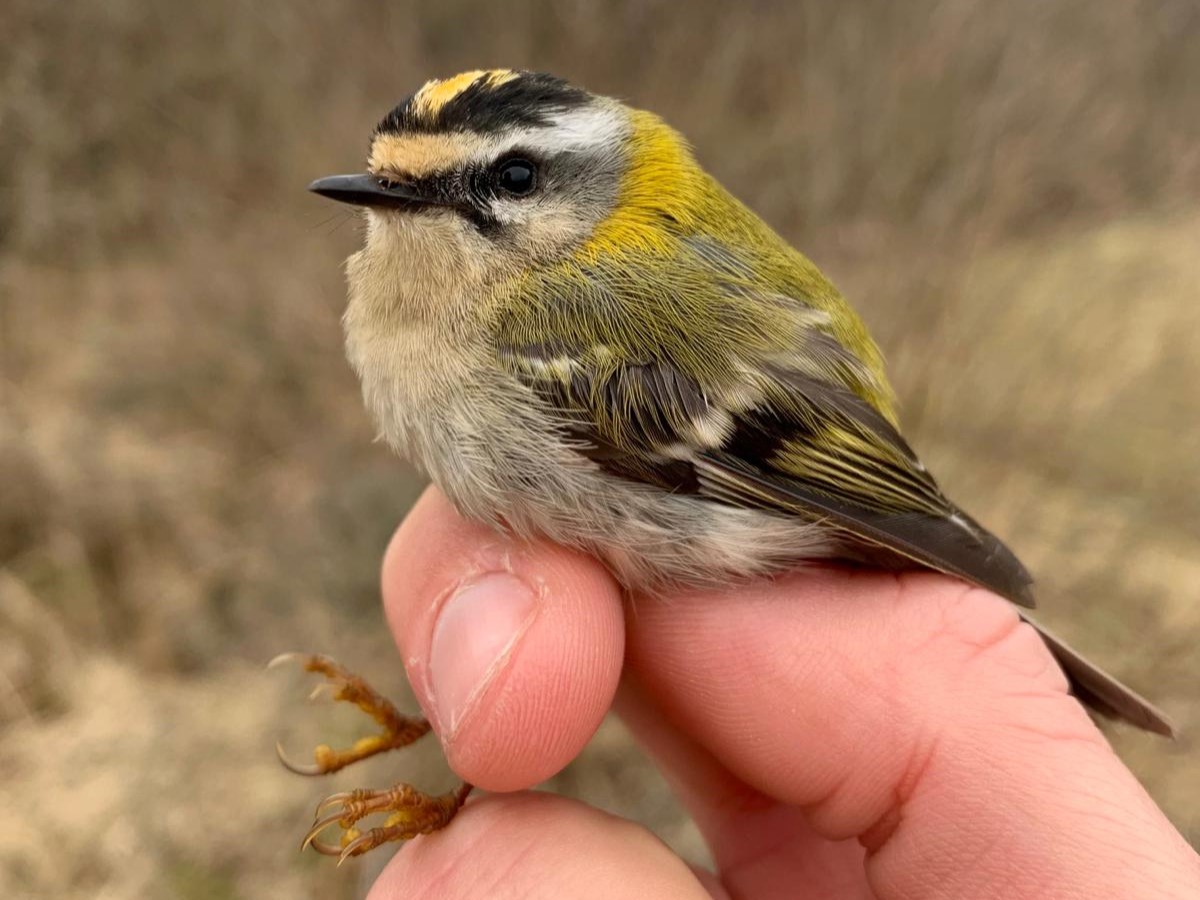
During ringing, we noticed the huge numbers of migrating passerines, but we were to busy to count those. Fortunately, that was no problem, because the counters at Nordstrand did a great job. Together with Knud and Eric, all the seabirds and the passerines got noted down in the notebook. Finally, raptor migration startet with some Merlins (Dværgfalk) and the first Rough-legged Buzzard (Fjeldvåge). Several thousands Woodpigeon (Ringdue) headed east and the Chaffinches (Bogfinke) summed up to 7550. After the standardised four hours the Mistle Thrush (Misteldrossel) number was alreadz very high, but there was some potential, Magnus noticed. In the following three hours he continued alone to finally reach the 3000 Mistle Thrushes! A new Skagen record!!
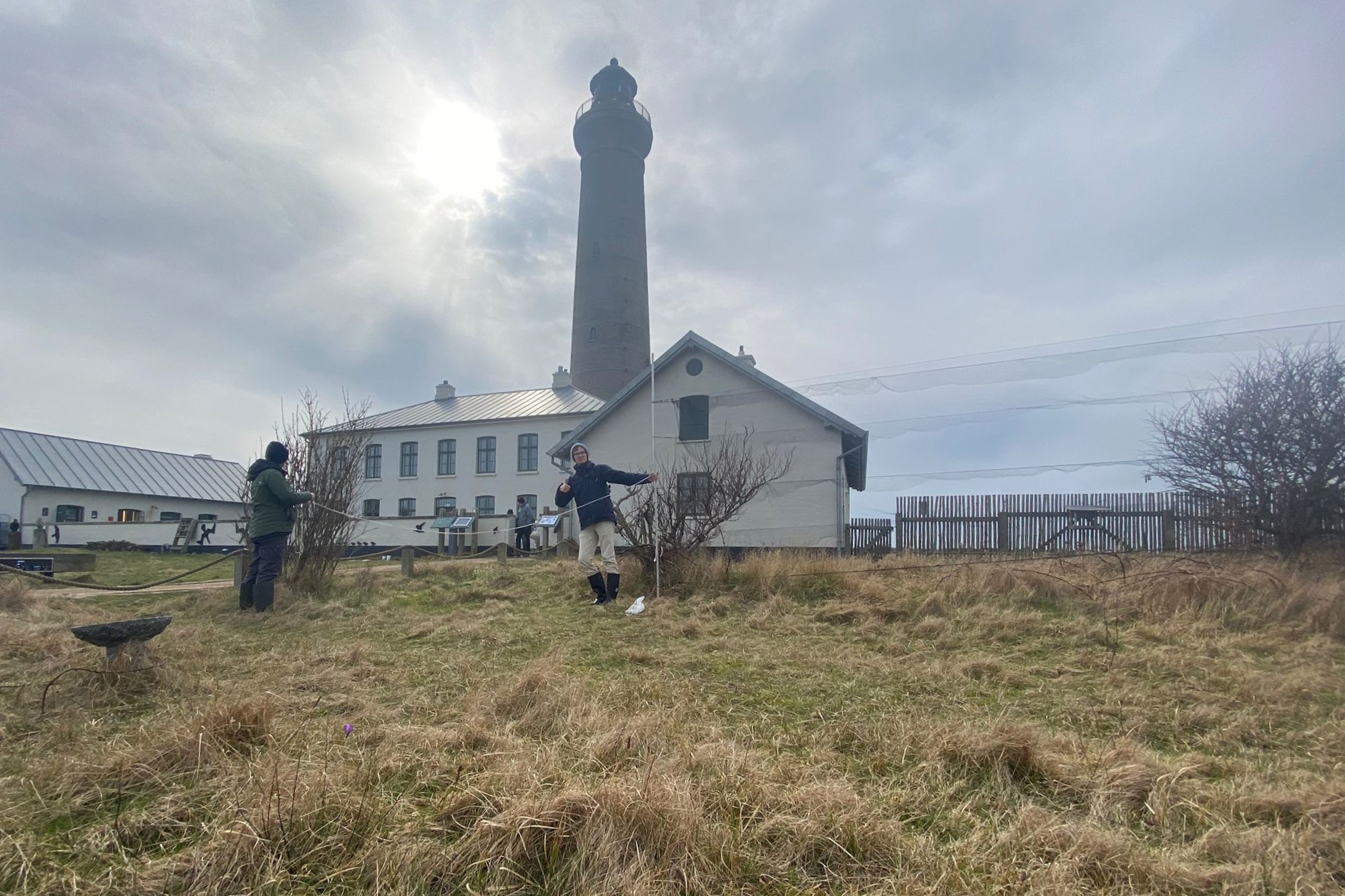
The afternoon was filled with setting up new nets and ringing in the old lighthouse garden, having nice looks at the still present Hoopoe (Hærfugle) and looking at the age of some birds with Simon Sr. Finally Magnus and I went for a nice nightcatching round with wet feet and without any birds. Much effort and no birds, but maybe it will be the other way around the next time.
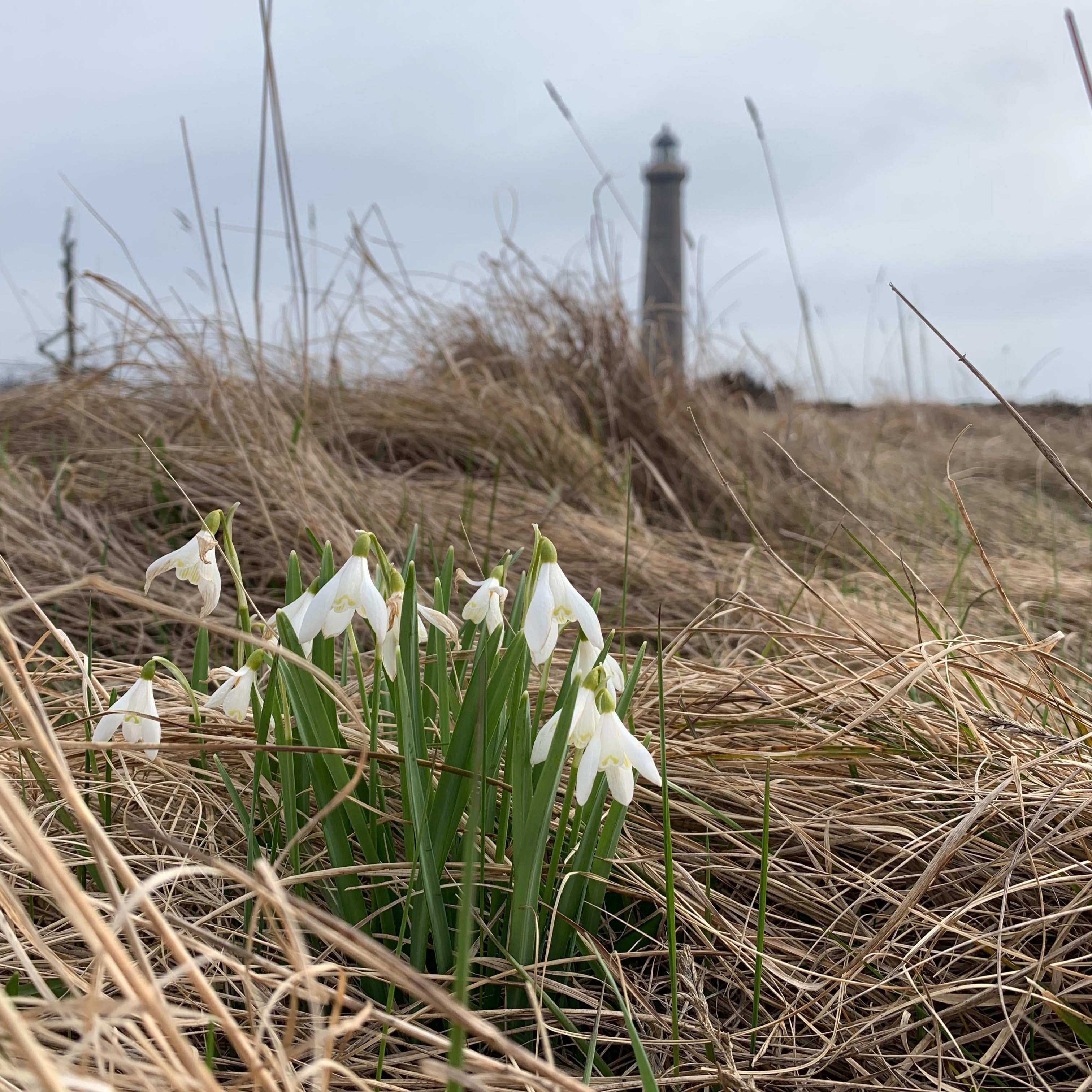
Ringing (Kabeltromlekrattet):
Total: 94
Ringing (Jennes Sø):
| Common Redpoll | Nordlig Gråsisken | 20 | RI | |||||||||||||
| Robin | Rødhals | 1 | RI | |||||||||||||
| Chiffchaff | Gransanger | 2 | RI | |||||||||||||
| Goldcrest | Fuglekonge | 10 | RI |
Total: 33
Ringing (Nordstjernevej):
| Lesser Redpoll | Lille Gråsisken | 1 | RI | |||||||||||||
| Goldcrest | Fuglekonge | 1 | RI | |||||||||||||
| Chiffchaff | Gransanger | 1 | RI |
Total: 3
Today’s observations in Dofbasen from observers in the area.
Sum of the raptors in the area based on observations typed into Dofbasen the same day.
People: Hannes Schäfer, Hayley Land, Isis Khalil, Hanelie Sidhu, Magnus Houen Lauritsen, Jonas Pedersen, Simon Kiesé, Alfred, Knud Pedersen, Eric Christophersen, Simon S. Christiansen.
Small Birds and cold hands
Last night Simon and I went nightcatching once again. There were only a few birds in the meadows but we got lucky with a Meadow Pipit (Engpiber).

Ringing started at 05:15 in the morning so Hayley, Isis and I got out of the lighthouse and started our walk to Kabeltromlen. The weather wasn't to bad but it was cold. At the ringing site the singing Bitterns (Rørdrum) accompanyed us while we opend the nets. Simon sr joined us for the first rounds which was good, because there were quit some birds around. The calls of Goldcrests (Fuglekonge) and Wrens (Gærdesmutte) were present for the whole ringing session. So were the birds. We had quite a hard time handling the little wigglers with our at this time really cold hands (0°C) While we were busy ringing Simon jr and Magnus made their way to Nordstrand to start the migration-count. While the first hour was not to bad, but still not that exiting, they had a hard time sitting at the beach because there was not to much happening. Lucky for them they got some company by other birders. Not only Knud was around but also Alfred, a 11 year old boy, was there and helped them quit a bit by counting the migrating Sommon Scoters (Sortand). Great work here!

Ringing ended with 68 new birds ringed and is to that day the best day this spring. We made our way back to the lighthouse where we took a rest and had our second breakfast. After counting Simon jr was just about to lock his bike and join us when he quickly checked some gulls flying over and was able to find a Iceland Gull making its way to the harbor! Magnus was still outside and got lucky relocating the Hoopoe (Hærfugle) which is still around.
Later Simon sr picked us up and we went to drive to the harbor to have a look at the gulls. We weren't able to find the Iceland Gull (Hvidvinget Måge) again but saw a Greater Black-Bagged Gull (Svartbag) with a ring. It was ringed as a pullus in southern Norway in 2022, and was already seen by me 2 days ago at Nordstrand.
When we arrived back home Simon sr had a presentation about how to age birds. It really helped understanding the different moult strategies.
Tomorrow morning I will take the train back to Germany. It was a short time up here but I really enjoyed it. There are so many nice people around and nature isn't to bad as well that I might use some southern winds the next years to migrate up here again :)
Ringing (Kabeltromlekrattet):
| Goldcrest | Fuglekonge | 19 | RI | |||||||||||||
| Chiffchaff | Gransanger | 9 | RI | |||||||||||||
| Blue Tit | Blåmejse | 4 | RI | |||||||||||||
| Robin | Rødhals | 11 | RI | |||||||||||||
| Wren | Gærdesmutte | 21 | RI | |||||||||||||
| Blackbird | Solsort | 3 | RI | |||||||||||||
| Redwing | Vindrossel | 1 | RI |
Total: 68
Ringing (Jennes Sø):
| Goldcrest | Fuglekonge | 8 | RI | |||||||||||||
| Chiffchaff | Gransanger | 1 | RI | |||||||||||||
| Lesser Redpoll | Lille Gråsisken | 1 | RI | |||||||||||||
| Common Redpoll | Nordlig Gråsisken | 47 | RI |
Total: 57
Ringing (Nordstjernevej):
| Goldcrest | Fuglekonge | 3 | RI | ||||||||||||
| Blue Tit | Blåmejse | 1 | RI |
Total: 4
Today’s observations in Dofbasen from observers in the area.
Sum of the raptors in the area based on observations typed into Dofbasen the same day.
People: Hannes Schäfer, Hayley Land, Isis Khalil, Magnus Houen Lauritsen, Simon Kiesé, Alfred, Knud Pedersen, Simon S. Christiansen.
